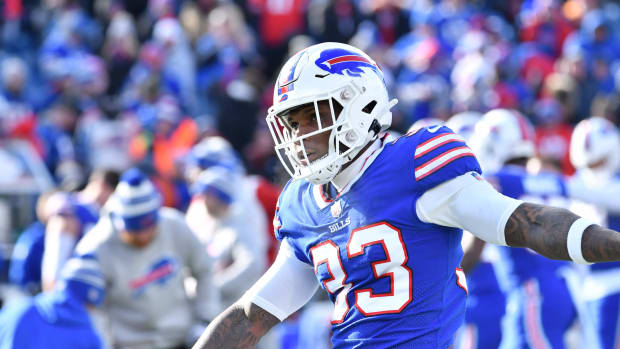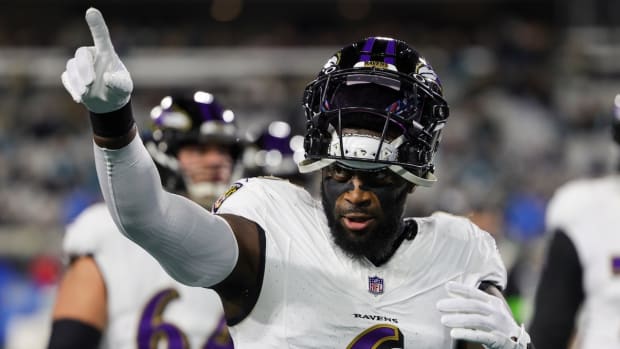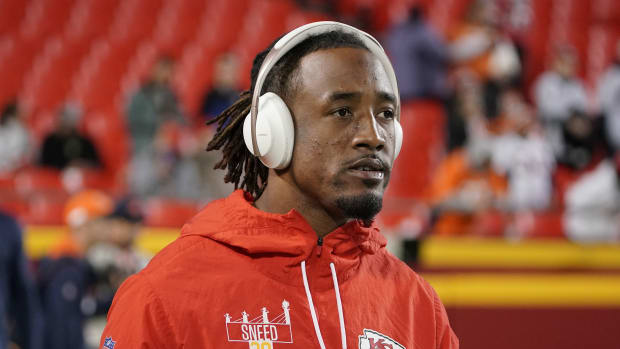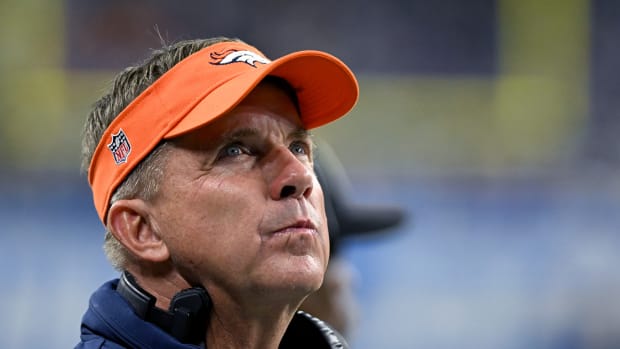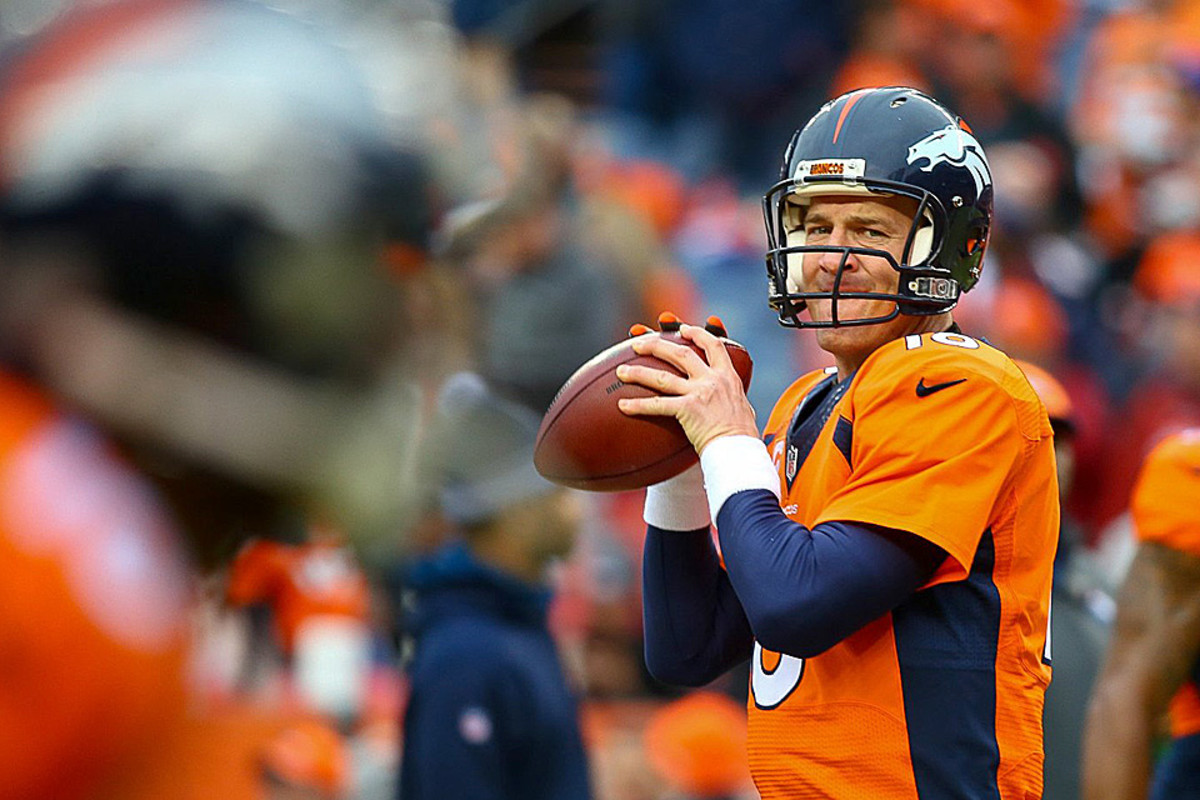
The Sun Hasn't Set on Peyton Manning
He was totally inept in Sunday’s loss to the Colts. But Peyton Manning is not done.
That is as long as he can answer one question affirmatively: Can he get his legs healthy and keep them healthy for an entire season? If he can’t be confident in that, then Manning should retire. Most quarterbacks, especially 39-year-old quarterbacks (which is what Manning would be next season), are done when their legs go. Manning’s legs went this season, and so did his effectiveness.
I watched all 735 passing plays—drop-backs, sacks, scrambles and penalties—that Manning was involved in during the past season. Much has been made of reports that Manning played the past month with a severe quad injury. That’s certainly evident from when he came up limping in the Dec. 14 game against the Chargers. But I think Manning was injured before that game, possibly as far back as the Oct. 23 home game against San Diego. That would mesh with Jay Glazer’s report that Manning had injuries to both quads, a partial tear in one and a deep bruise in the other.
From what I saw, there is a clear line of demarcation between Manning’s play before and after that first matchup with the Chargers. He played exceedingly well up to that game. I can actually pinpoint the first play I noticed something was wrong. It was a simple out on first down to Demaryius Thomas with 2:31 remaining in the third quarter. Manning faked a handoff, got to the top of his drop, stepped up a little in the pocket, and then awkwardly fired a pass to his left that traveled 14 yards and wasn’t even close to Thomas. To be fair, Ronnie Hillman had (judging by the post-play tongue lashing Manning gave him) mistakenly run a route and drew a defender into Manning’s path, so he was probably being safe with the errant throw. But it wasn’t the inaccuracy that caught my eye (Manning has a few wayward passes each game); it was his mechanics.
Manning’s delivery and stride were normal, but when he followed through, he brought his back foot all the way in front of him. It was like he was throwing around his body or legs.
Courtesy NFL Game Rewind
When you watch a quarterback throw enough times, little things like this stand out. Like most passers, Manning generates the torque needed to power the ball by releasing his hips. He usually just spins and lifts up his back foot, which comes forward slightly with his momentum. Earlier this season Manning threw a similar pass, which needed a little mustard to beat the defender to the sideline, with 7:22 left in the second quarter against the Seahawks. That time, Manning was all spin.
Courtesy NFL Game Rewind
He didn’t drag his right foot awkwardly like he did against the Chargers, a throw I noted because it was so abnormal for Manning. But I didn’t think much of it until I continued to watch each snap in progression.
I have a rudimentary system for grading players when I watch film, and while it’s far from perfect, it has served me well. Plus plays are difficult throws or decisions, depending on how good the coverage and/or pass-rush are. Minus plays are those that are missed, but are usually made with regularity. Even if I’m using flawed logic, as long as I’m consistent with how I apply it I can ballpark whether someone played well or not.
Through that first meeting with the Chargers, the season’s seventh game, I had Manning for 44 “plus” plays, and 32 “minus” plays for the season (with 25 percent of those minus plays coming in the Seattle loss).
Fallout in Denver
Not even 24 hours after a one-and-done playoff appearance, the Broncos and coach John Fox parted ways. Here's a look at who Denver might be targeting, where Fox will land and how the other five coaching vacancies stand right now. FULL STORY
And what you have to remember about the Broncos’ passing system, which has been developed by Manning and offensive coordinator Adam Gase, is that it is brilliant in the many ways it uses personnel and route concepts to get receivers open. Outside of maybe Chip Kelly with the Eagles, I don’t think an NFL passing system gets more players wide open than the Broncos’. It’s like the Oregon of the NFL. That’s not to say it’s perfect—it has flaws against smart man-to-man coverages—but over the course of an NFL season it’s pretty good. I say that to explain why many of Manning’s throws do not have a high degree of difficulty compared to some of his peers’, Aaron Rodgers for instance.
Back to Manning’s performance. In the next three games after the San Diego win (losses to the Patriots and Rams and a win over the Raiders), Manning had 21 plus plays and 38 minus plays. Yes, the Broncos defeated the Raiders 41-17 on Nov. 9, and Manning completed 31 of 44 passes for 340 yards and five touchdowns (two interceptions), but it was one of Manning’s worst performances of the season. While two of his touchdown passes were terrific throws to Emmanuel Sanders, the other three were wide open and/or plays made by the receiver (like C.J. Anderson’s 51-yard catch-and-run TD, when he broke five tackles and zig-zagged across the field). The Broncos trailed 10-6, thanks to two poor Manning interceptions, until putting up two scores in the final three minutes of the first half.
In the final nine games of the season, during which the Broncos went 6-3, Manning had a 64-to-78 plus/minus ratio. That’s basically a flip from the 44-to-32 he had in the first seven games of the season. Manning did play well in wins over the Dolphins on Nov. 23 and Chargers on Dec. 14, with mediocre performances wins over the Chiefs and Bills in between. I can’t explain that, but note that the Broncos made a concerted effort to run the ball much more after the loss to the Rams on Nov. 16. A team source said that after the Rams loss it was determined that the Broncos couldn’t continue throwing the ball 40-plus times a game, something they did against the Patriots (57), Raiders (44) and Rams (54). Was that decision made because of Manning’s health/ineffectiveness? That’s unknown. But after leaving St. Louis, the Broncos only attempted 40-plus passes in a game twice, and both were losses: the ugly defeat to the Bengals on Dec. 22 (44), and Sunday’s season-ending loss to the Colts (46).
As for Sunday’s game, Manning had three plus plays (two on Denver's first and only touchdown drive of the game), and 15 minus plays. And that was after a bye week.
The Manning we saw against the Colts, the one who threw inaccurate wobblers downfield, made poor decisions and didn’t have enough velocity to complete easy slants, was not the Manning I saw in the first seven games of the season. That Manning was playing well, showed an ability to drop passes in the bucket down the field and generally looked like an MVP candidate. The Manning who ended the season was someone we’ve never seen before.
I think it’s absurd to believe that Manning aged, suddenly, in the middle of the season and the game has passed him by. To me, the more logical explanation for the sharp contrast between his play before and after Oct. 23 is that Manning played through the second half of the season with serious leg problems that he couldn’t shake. And the way Manning throws the ball, he just can’t function very well without his legs. That he was able to guide the Broncos to six wins in the final 10 games is a testament to his mind and to Denver’s offensive system.
Broncos team president John Elway has forgotten more about good quarterbacking than most of us will ever know. He’s also not very sentimental, so I don’t think he was just being politically correct (like the Packers once were with Brett Favre) on Tuesday when he said he wanted Manning to return.
“Bottom line is that we want him back,” Elway said. “It's going to come down to what he wants. I did have a great conversation with Peyton [on Monday]. We talked about the game. I said, ‘The last thing we're going to do at this point in time, having been through what you've been through, is talk about your future.’ I told him, ‘Just know how much we want you back, but you need time to get away from this.’ ”
It’s going to be a different Broncos team in 2015. Coach John Fox is gone, and Denver has many pending free agents. And only Manning knows whether he wants to go through the effort of rehabbing his legs, then putting in the training to make his lower body more durable for a potential 18th NFL season.
But I believe that Manning has another season of very good football left in him. The Manning we saw in the final 10 games is not who he is now. We were watching a player gutting out a serious injury that he couldn’t get past. I hope he’s back for at least one more season, so he can go out the right way. He still has something left.
Follow The MMQB on Facebook, Twitter and Instagram.
[widget widget_name="SI Newsletter Widget”]




































